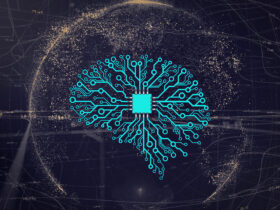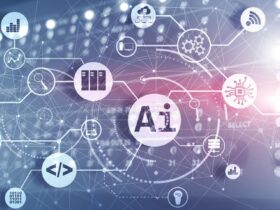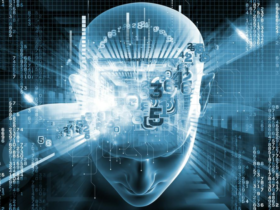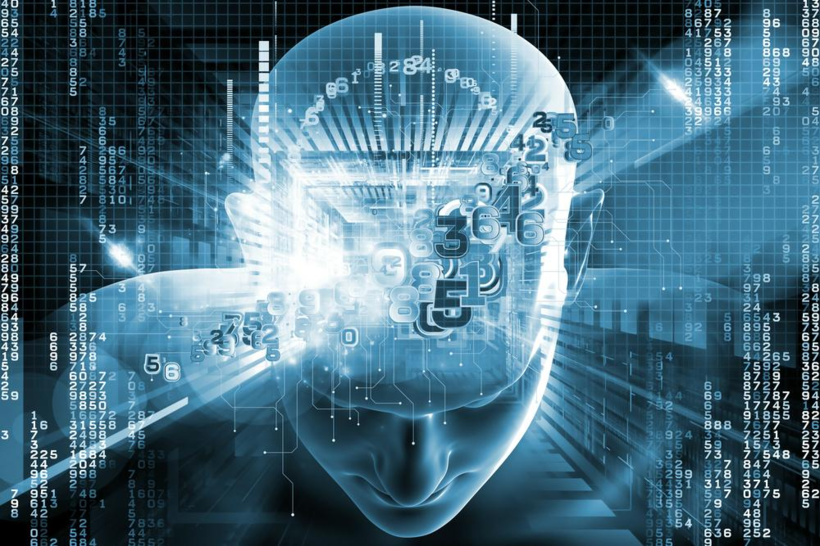Next-generation Artificial Intelligence (AI) is no longer just the topic of science-fiction movies. The next wave of AI technologies in our daily lives may not be so far off.
AI will be everywhere in the next few years. It will change everything you think or do, from your relationships to work projects.
The next-gen Edge AI Application provides an immersive, intuitive, and fun learning experience while saving time and money with multiple programs like Ranking, Classification, and Designing.
What is Next-Gen Edge AI?
Next-gen Edge AI, also known as Edge Intelligence or next-gen AI, combines Edge Computing and Artificial Intelligence to track and execute machine learning.
AI workflows at the edge use data originating from centralized data centers (cloud, devices) and data originating from human sources (edge). However, cloud AI gets developed and executed entirely in the cloud, which is more common.
Additionally, Edge AI includes components such as remote devices, Internet of Things devices, and exclusive edge servers.
In this way, Edge AI facilitates the storage and computation of data, making it more accessible for users.
Moreover, Edge AI combines AI algorithms with edge computing capabilities on local devices.
Thus, data can get processed and analyzed without requiring connectivity and integration, allowing users to access data from various sources. Therefore, Edge AI reduces downtime or latency by combining Edge computing and AI processes.
Furthermore, next-gen edge computing devices successfully integrate AI processes as an essential component.
As a result, users can build data and support user requirements without interacting with physical locations, saving them time and money.
How Does Edge AI Work?
It is necessary for machines to functionally replicate human intelligence when it comes to replicating human skills, such as seeing, detecting objects, driving a car, understanding speech, speaking, walking, etc.
To replicate human cognition, AI uses a system named deep neural network. As they get trained, these DNNs result in many examples of specific types of questions and the correct answers.
Deep learning is a training process that runs in a data center or the cloud because large amounts of data are required to train an accurate model, and data scientists must collaborate to configure the model.
Once trained, the model begins to answer real-world questions through an “Inference engine.”
In edge AI deployments, the inference engine runs on a computer or device located remotely, like a factory, hospital, car, satellite, or home.
A troublesome dataset is typically sent to the cloud to train more, and the inference engine at the edge gets replaced once the AI has encountered the problem.
After edge AI models have to get deployed, they continue to gain in intelligence; this feedback loop significantly improves their performance.
The Basic Components of Edge AI
The following components of intelligence have been the focus of AI research.
Edge Computing
Firstly, Edge Computing involves multiple processes at the edge of a network for collecting, analyzing, and processing data.
By definition, edge computing is storing and calculating data at the point where the data has to get collected.
Artificial Intelligence
The concept of artificial intelligence refers to the ability of machines to mimic human cognitive skills.
Furthermore, problem-solving skills and the ability to comprehend languages are more common.
Additionally, AI combines enhanced analytical capabilities with automation to create an advanced machine.
Applications of Edge AI Across Various Industries
Numerous industries, including manufacturing, healthcare, and energy, are now adopting Edge AI applications for their core functioning.
Using edge AI applications also opens up new business opportunities and innovations across various sectors.
Hence, here are some of its applications:
Smart Energy: Intelligent Predictions
Several industries are directly or indirectly affected by the energy industry. Furthermore, high demand and inconsistent supply threaten the health and welfare of the entire population.
For optimum results, Edge AI implements intelligent forecasting. As a result, it generates complex simulations based on historical data, weather patterns, etc.
These simulations also coordinate the generation, distribution, management, and monitoring of
energy resources.
Edge AI in Healthcare: AI-enabled Solutions
Increasing life expectancy and improving the standard of living are key objectives of the healthcare industry. Modern medical professionals and institutions use Edge AI for surgical procedures.
Moreover, it allows patients to monitor their activities and perform remote surgeries. As a result, healthcare professionals use edge devices that implement AI.
Benefits of Edge AI
There are several advantages to edge AI over cloud AI, including:
Higher speeds/lower latency
The functioning gets performed locally, eliminating the need to communicate with the cloud and wait for a response.
Lower bandwidth requirement and cost
Through Edge AI, voice, video, and high-fidelity sensor data can get sent over cellular networks with less bandwidth and associated costs.
Enhanced data security
Local processing reduces the risk of sensitive data being intercepted in transit or stored in the cloud.
Improved reliability/autonomous technology
In applications such as autonomous cars and industrial robotics, AI can run even when a
network or cloud service fails.
Reduced power
In many cases, it is possible to perform AI tasks on the device with less energy than to send the data to the cloud, thus extending battery life.
The Future Of Edge Technology
Edge AI is an emerging field that is experiencing rapid growth. LF Edge predicts a compound growth rate of 40% for the power footprint of edge devices In 2028.
As a result, edge AI will continue to grow as well. Almost all edge AI applications today operate on consumer devices, such as smartphones, wearables, and smart appliances.
AI at the enterprise edge is expected to grow faster over the next few years as cashier-less checkouts, smart hospitals, smart cities, and intelligent supply chains expand.
Federated deep learning is a promising technology that could improve edge AI’s privacy and security. The training process gets improved by uploading a relevant subset of raw data when uploaded to the cloud.
A federated learning system updates AI training locally on the edge device. Instead of manually updating the models, the updates get uploaded to the cloud, which reduces privacy concerns.
Improved edge AI arrangement could also be a significant change. Most of today’s edge AI algorithms perform local inference directly on data that the device sees instantly.
Using data from a collection of sensors adjacent to the device, more sophisticated inference tools can get developed in the future.
Conclusion
To summarize, edge-based computing is unquestionably an attractive way for IoT devices to obtain high-quality, actionable sensor data while saving time and energy.
Advanced technologies are used in edge AI applications to increase opportunities. Moreover, Edge AI applications enhance productivity and improve network bandwidth.












